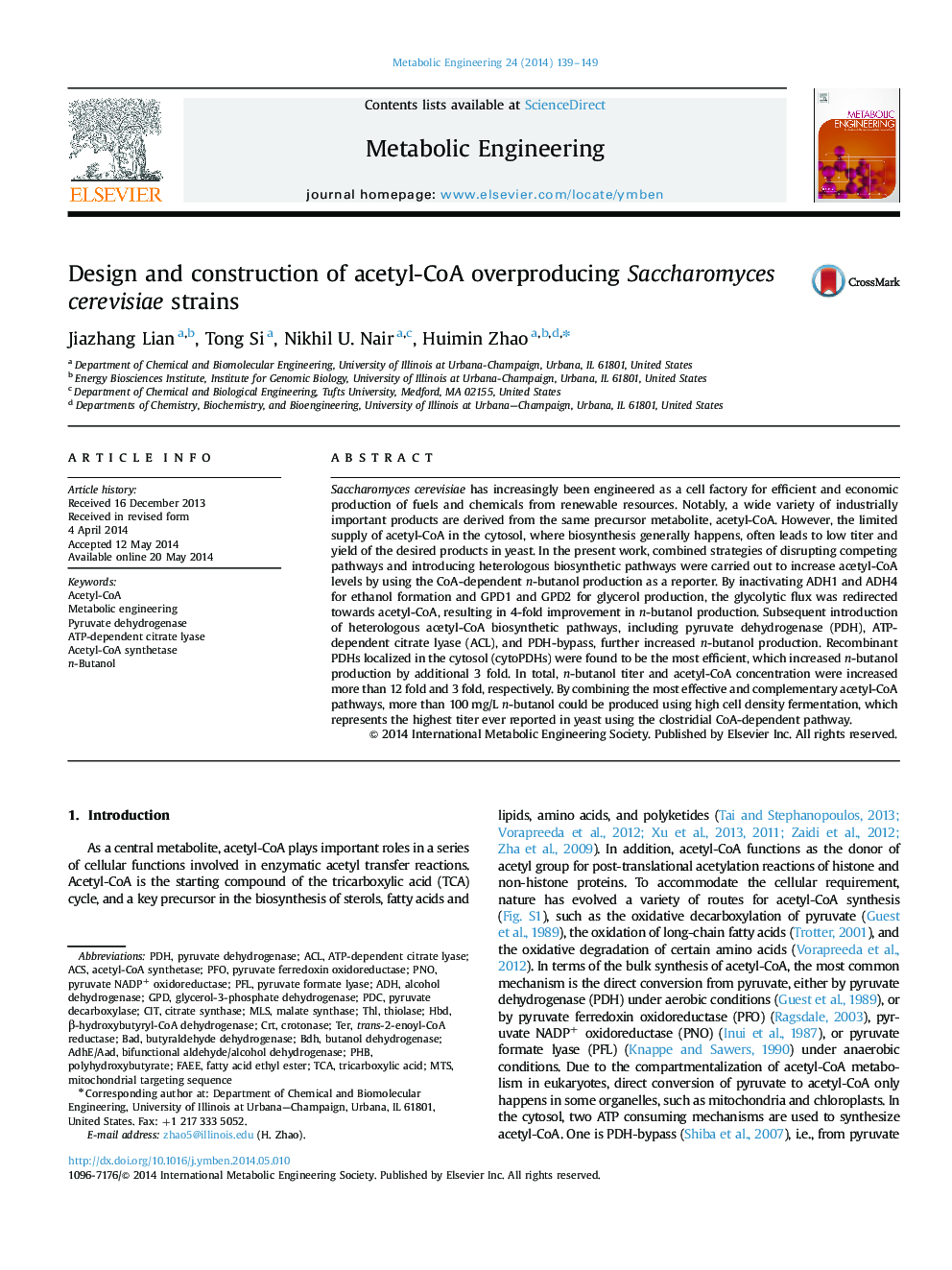| کد مقاله | کد نشریه | سال انتشار | مقاله انگلیسی | نسخه تمام متن |
|---|---|---|---|---|
| 6494604 | 44812 | 2014 | 11 صفحه PDF | دانلود رایگان |
عنوان انگلیسی مقاله ISI
Design and construction of acetyl-CoA overproducing Saccharomyces cerevisiae strains
دانلود مقاله + سفارش ترجمه
دانلود مقاله ISI انگلیسی
رایگان برای ایرانیان
کلمات کلیدی
CITPnOThlCrotonaseBDHPDHPFLPFOGPDN-butanolMTSADHACSPHBFAEEPDCCrtHbdTCAfatty acid ethyl ester - اتیل استر اسید چربAcetyl-CoA synthetase - استیل سولفات سدیمAcetyl-CoA - استیل کولاtricarboxylic acid - اسید تری کربوکسیلیکAlcohol dehydrogenase - الکل دهیدروژنازBAD - بدmitochondrial targeting sequence - توالی هدایت میتوکندریThiolase - تیولازTER - داشتنPyruvate decarboxylase - دیربوکسیلاز پیرواتACL - رباط صلیبی جلوییMalate synthase - سنتاز ملاتCitrate synthase - سیترات سیتواستاتMetabolic engineering - مهندسی متابولیکMLs - میلی لیترPolyhydroxybutyrate - پلی هیدروکسی بوتیرتPyruvate ferredoxin oxidoreductase - پیروت فریدکسین اکسیدوردوکتازpyruvate dehydrogenase - پیرووات دهیدروژنازpyruvate formate lyase - پیرووات فرایات لیائازglycerol-3-phosphate dehydrogenase - گلیسرول 3-فسفات دهیدروژناز
موضوعات مرتبط
مهندسی و علوم پایه
مهندسی شیمی
بیو مهندسی (مهندسی زیستی)
پیش نمایش صفحه اول مقاله

چکیده انگلیسی
Saccharomyces cerevisiae has increasingly been engineered as a cell factory for efficient and economic production of fuels and chemicals from renewable resources. Notably, a wide variety of industrially important products are derived from the same precursor metabolite, acetyl-CoA. However, the limited supply of acetyl-CoA in the cytosol, where biosynthesis generally happens, often leads to low titer and yield of the desired products in yeast. In the present work, combined strategies of disrupting competing pathways and introducing heterologous biosynthetic pathways were carried out to increase acetyl-CoA levels by using the CoA-dependent n-butanol production as a reporter. By inactivating ADH1 and ADH4 for ethanol formation and GPD1 and GPD2 for glycerol production, the glycolytic flux was redirected towards acetyl-CoA, resulting in 4-fold improvement in n-butanol production. Subsequent introduction of heterologous acetyl-CoA biosynthetic pathways, including pyruvate dehydrogenase (PDH), ATP-dependent citrate lyase (ACL), and PDH-bypass, further increased n-butanol production. Recombinant PDHs localized in the cytosol (cytoPDHs) were found to be the most efficient, which increased n-butanol production by additional 3 fold. In total, n-butanol titer and acetyl-CoA concentration were increased more than 12 fold and 3 fold, respectively. By combining the most effective and complementary acetyl-CoA pathways, more than 100Â mg/L n-butanol could be produced using high cell density fermentation, which represents the highest titer ever reported in yeast using the clostridial CoA-dependent pathway.
ناشر
Database: Elsevier - ScienceDirect (ساینس دایرکت)
Journal: Metabolic Engineering - Volume 24, July 2014, Pages 139-149
Journal: Metabolic Engineering - Volume 24, July 2014, Pages 139-149
نویسندگان
Jiazhang Lian, Tong Si, Nikhil U. Nair, Huimin Zhao,